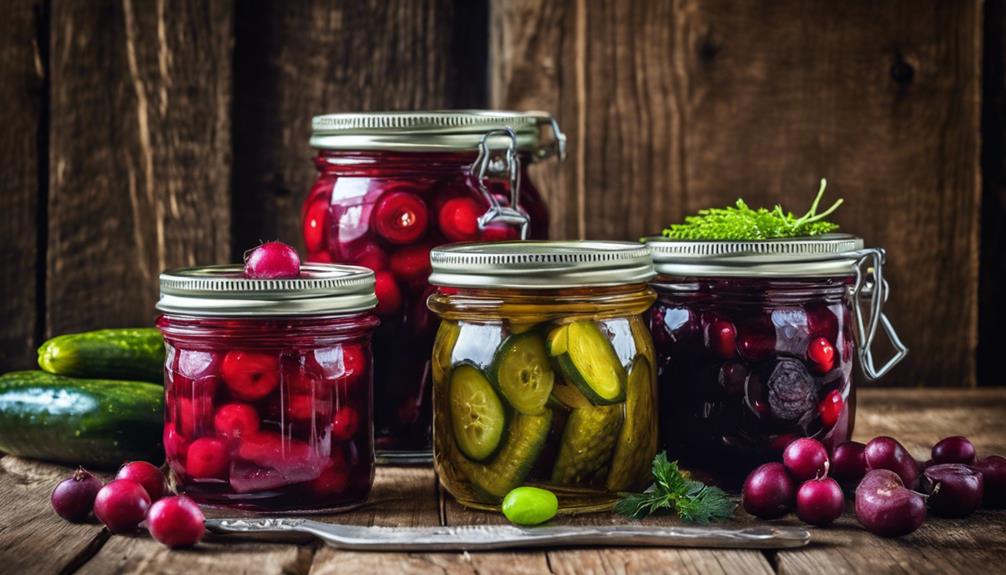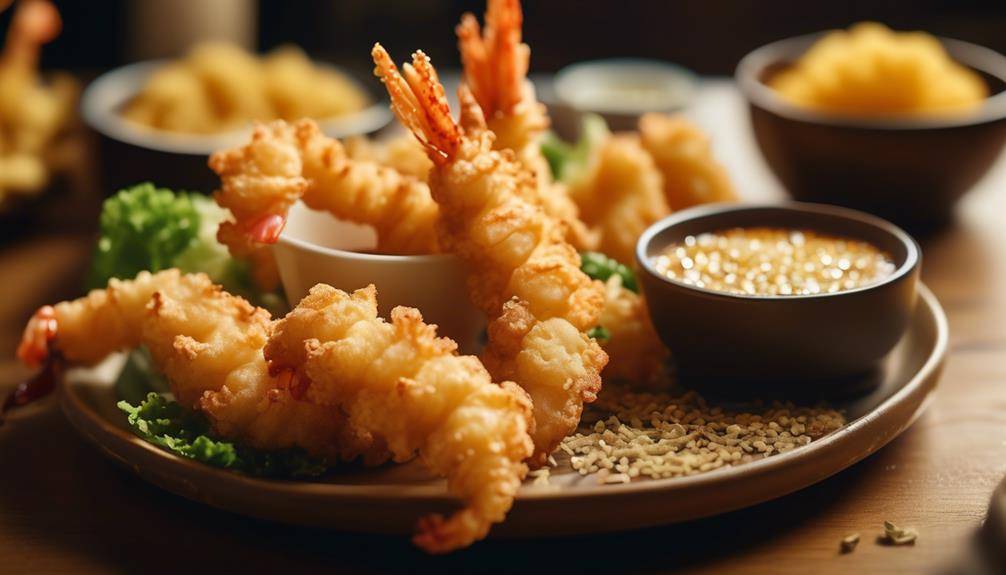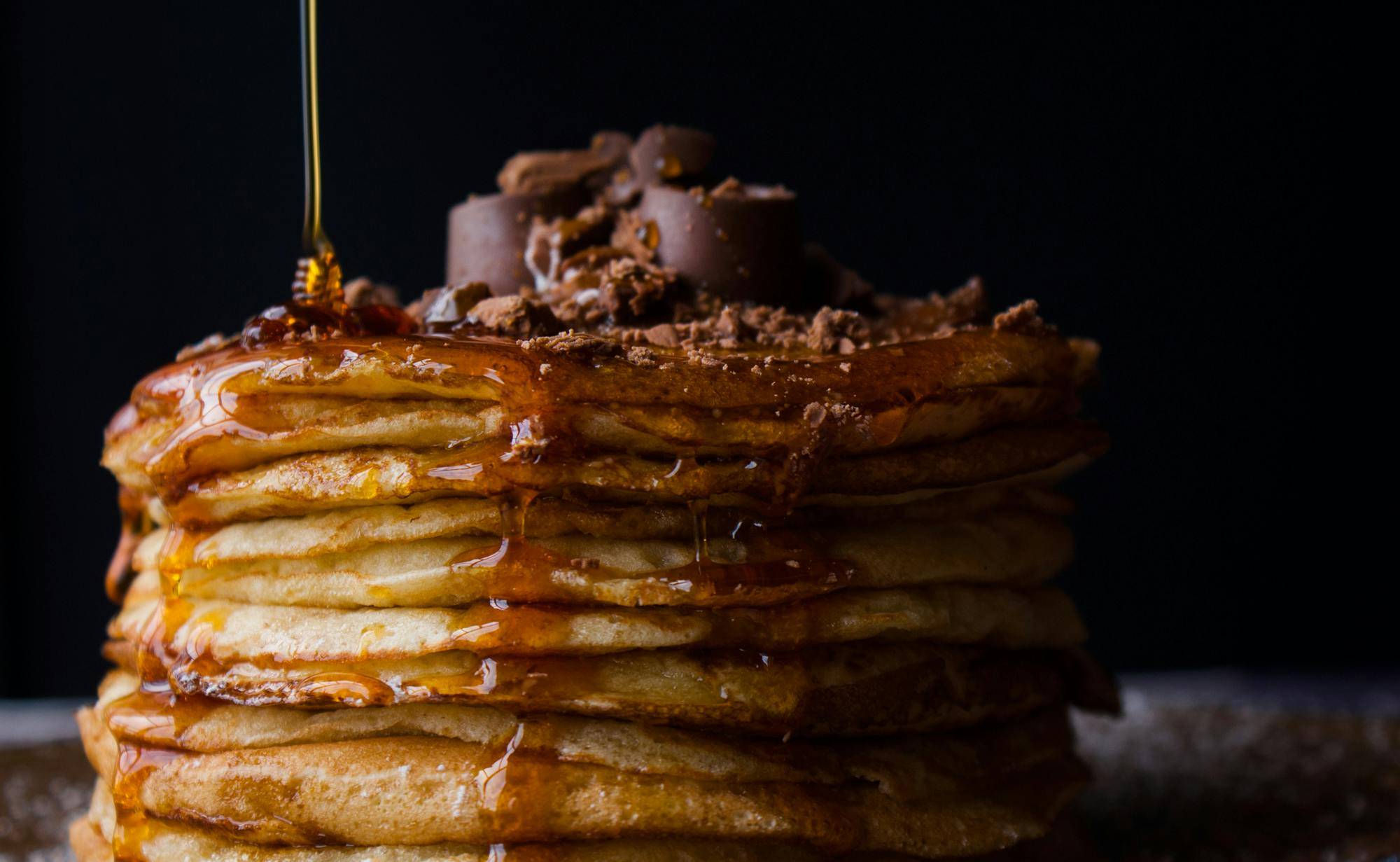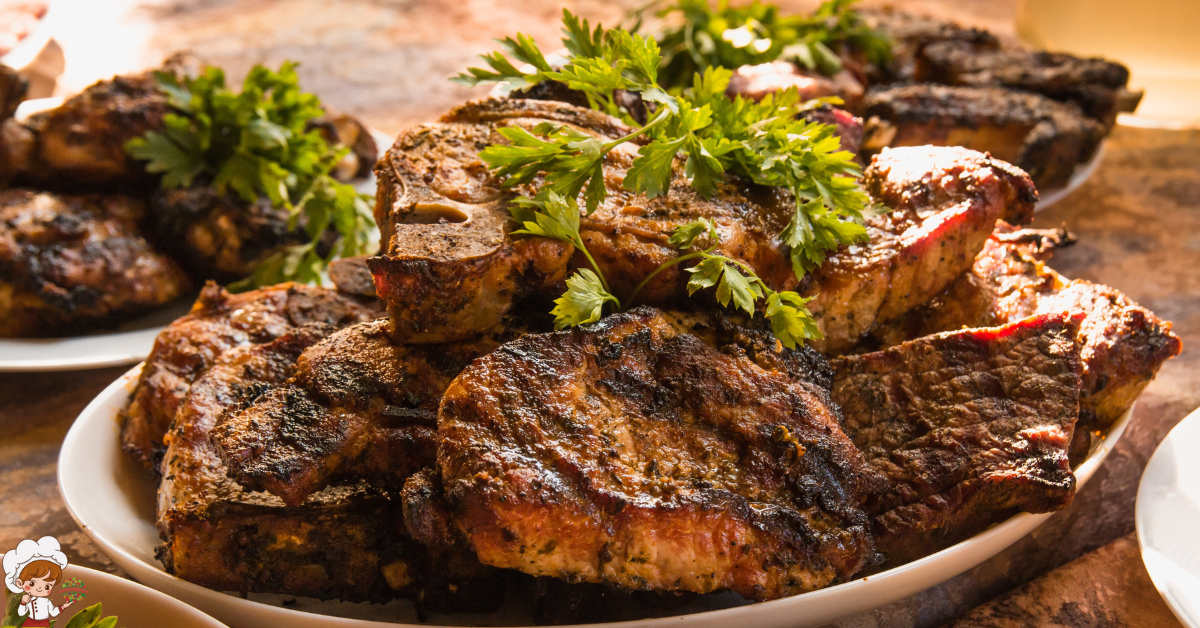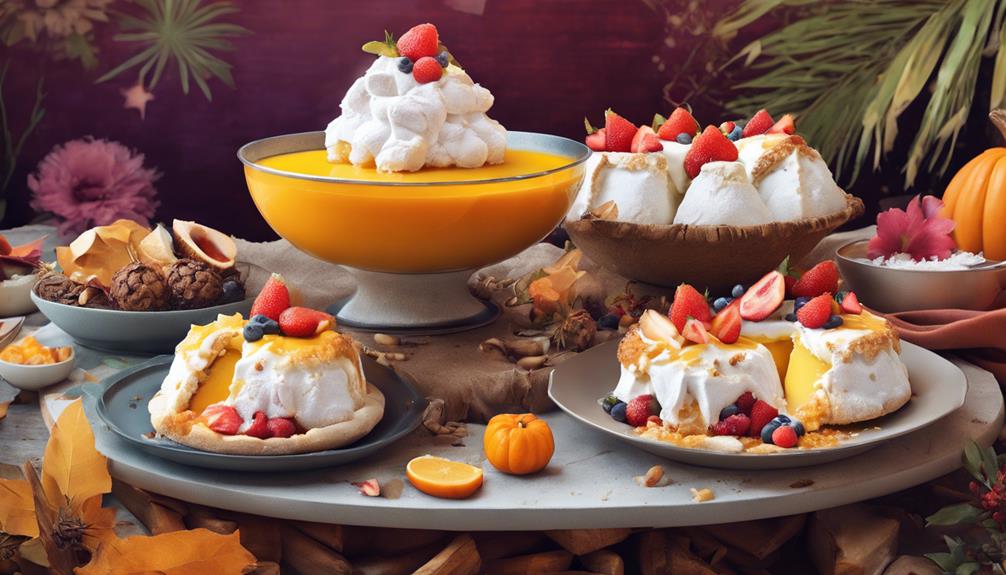The Best FlambeVs Other Cooking Techniques
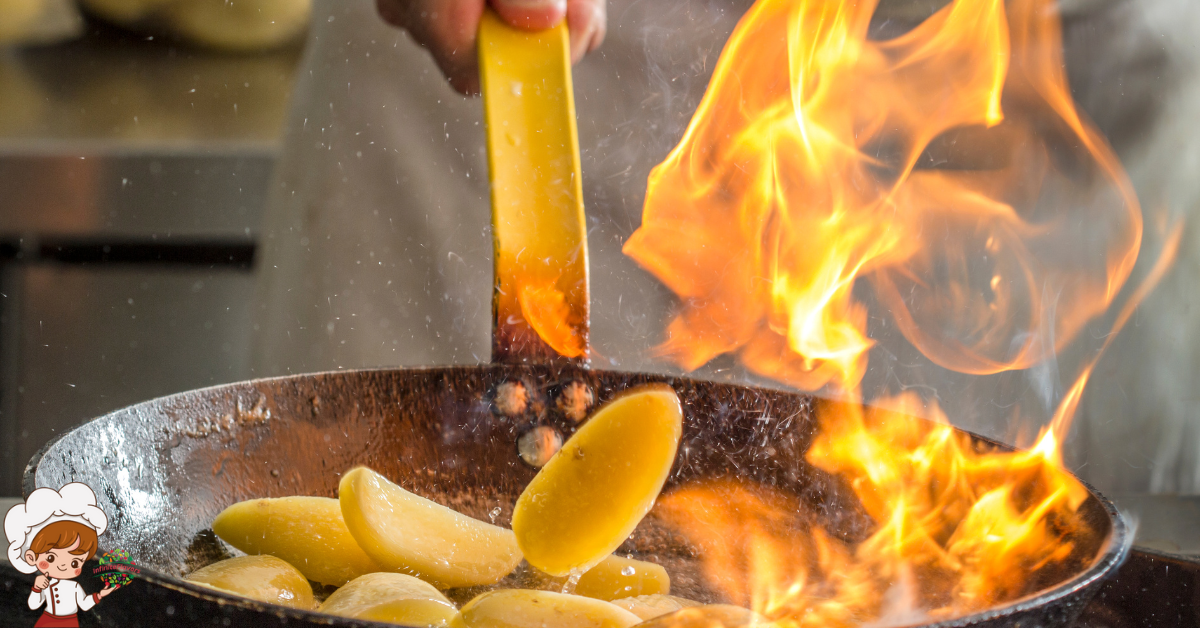
FlambeVs Other Cooking Techniques; Flambé stands out from other cooking techniques because it creates bold flavors by igniting high-proof alcohol in hot pans. While sautéing focuses on quick cooking without flames, flambé adds a dramatic flair and smoky essence, enhancing dishes like meats and sauces. Unlike braising, which tenderizes through slow cooking, flambé instantly seals in flavors. Roasting and baking cook with even, gradual heat, while flambé’s intense flames caramelize sugars for deeper taste. Although fun, flambé comes with safety risks. If you’re curious about how to master this technique and its place among various cooking methods, there’s more to explore.
What Is Flambe?
Flambé is a cooking technique that ignites alcohol to create a burst of flames, adding both flair and flavor to your dishes. When you master flambé techniques, you can elevate your culinary skills and impress your guests. To achieve this, you typically add a high-proof alcohol, like brandy or rum, to a hot pan containing your dish. You then ignite the alcohol, allowing the flames to sear the ingredients while infusing them with the rich flavors of the spirit.
However, there are several flambé myths that can deter you from trying this exciting method. One common myth is that flambé is only for professional chefs. In reality, with proper precautions, anyone can flambé at home. Just make sure to have a fire extinguisher nearby and avoid flammable items around your cooking area. Another myth suggests that flambé is only for desserts, but you can flambé savory dishes too, like meats and vegetables, enhancing their taste with a smoky undertone.
Understanding the right techniques and debunking these myths allows you to experiment confidently. While it is crucial to respect the fire, flambéing can be a fun and rewarding experience. So, gather your ingredients, choose a suitable alcohol, and get ready to ignite a culinary adventure that’ll bring excitement to your kitchen. With practice, you’ll soon become a flambé expert, ready to impress anyone who sits at your dining table.
History of Flambe
The origins of flambé can be traced back to the 19th century in French cuisine, where it began as a method for enhancing flavors and presentation. As you investigate its history, you’ll find that this cooking technique quickly gained popularity among chefs enthusiastic to impress diners. The dramatic flames that rise when alcohol ignites not only elevate the dish but also create a memorable dining experience.
Flambé’s cultural significance extends beyond mere spectacle. It reflects the French culinary tradition of artistry and precision, embodying the passion and creativity that chefs have for their craft. The act of igniting a dish showcases skill and confidence, making it a staple in upscale restaurants and home kitchens alike. You might be surprised to learn that this technique isn’t limited to savory dishes; desserts like Crêpes Suzette and Baked Alaska have also embraced flambé, highlighting its versatility.
Throughout the years, flambé has evolved, with chefs around the world adopting and adapting it to suit their culinary styles. While its French roots are undeniable, you’ll find variations in cuisines from different cultures, each adding a unique twist. This adaptability speaks to the timeless appeal of flambé, ensuring its place in modern cooking.
As you explore deeper into the culinary world, you’ll appreciate how flambé not only transforms flavors but also serves as a bridge between tradition and innovation, carrying its rich history into the present.
The Science Behind Flambe
Igniting alcohol in flambé creates a mesmerizing interplay of science and culinary artistry. When you pour a high-proof spirit over your dish and introduce a flame, you’re engaging in a captivating example of flambe chemistry. The alcohol vapors rise and mix with oxygen in the air, setting the stage for combustion reactions. These reactions occur when the alcohol reaches its flash point, producing a fiery burst that not only adds drama to your cooking but also serves practical purposes.
As the flame consumes the alcohol, it generates heat, which can help to cook your food quickly and evenly. This rapid cooking method often seals in flavors and moisture, transforming the texture of your ingredients. You might notice that different types of alcohol can produce varying intensities of flame, depending on their alcohol content and chemical properties. Higher-proof spirits ignite more easily and burn hotter, while lower-proof options may not create as dramatic an effect.
Moreover, the combustion reactions during flambé contribute to the caramelization of sugars in your dish, enhancing the overall flavor profile. While you may be drawn to the excitement of the flame, understanding the underlying science can deepen your appreciation for this technique. So, next time you flambé, remember that you’re not just creating a showstopper; you’re also conducting a science experiment that transforms your meal in a unique way.
Flavor Enhancement Techniques
When you cook, layering ingredients can create a rich depth of flavor that elevates your dishes. It’s essential to find the right balance of seasoning, as this can make or break your meal. Let’s explore how these techniques can transform your culinary creations.
Layering Ingredients for Depth
Layering ingredients is a powerful technique that elevates dishes with rich, complex flavors. When you practice ingredient layering, you’re not just tossing everything into a pot; you’re thoughtfully arranging flavors to create depth perception in each bite. Start with a solid base, like aromatics—onions, garlic, or ginger—sautéing them to release their natural oils and flavors.
Next, add proteins or vegetables, allowing them to caramelize slightly. This step enhances sweetness and adds a delightful texture. Then, consider incorporating spices and herbs at various stages. Adding dried spices early helps them bloom, while fresh herbs added at the end provide a burst of brightness.
Don’t forget about liquids, either. Using stocks instead of water can deepen the overall flavor profile. You might also layer in acidity with a splash of vinegar or citrus, which balances the richness.
Importance of Seasoning Balance
Building on the foundation of layered ingredients, achieving the right balance of seasoning can elevate your dish even further. You need to understand seasoning ratios to create harmonious flavor profiles. Too much salt can overpower your dish, while too little can leave it flat. Start with a basic ratio, like 1 teaspoon of salt per quart of water, and adjust based on your ingredients.
Consider the other components in your dish; sweet, sour, and umami elements can enhance the overall taste when balanced correctly. For instance, if you’re working with a rich sauce, a splash of vinegar can cut through the heaviness, while a pinch of sugar can round out acidity. Taste as you go, and don’t hesitate to tweak those seasoning ratios until the flavors sing.
Safety Considerations With Flambe
When you’re flambeing, safety should be your top priority. You need to manage fire risks, use the right equipment, and have a solid emergency plan in place. Let’s explore these essential safety considerations to guarantee a successful and secure cooking experience.
Fire Risk Management
Flambéing can elevate a dish with dramatic flair, but it also poses significant fire risks that must be managed carefully. To guarantee fire safety, start with a thorough risk assessment of your cooking environment. Identify flammable materials nearby, such as paper towels, dishcloths, or even curtains. Keep these items at a safe distance from your cooking area to minimize hazards.
Before you begin flambéing, confirm you have appropriate tools at hand. A fire extinguisher should always be within reach, preferably one rated for grease fires. Also, make certain your smoke detectors are functional, as they’ll provide an early warning in case things get out of control.
When you’re ready to flambé, always keep a close eye on the flame. Never leave it unattended, and avoid adding too much alcohol too quickly, as it can create an uncontrollable fire. It’s wise to have a lid or baking sheet nearby to smother the flames if necessary. By following these fire safety measures and conducting a proper risk assessment, you can enjoy the theatrical experience of flambéing while keeping your kitchen safe.
Proper Equipment Use
To guarantee a safe flambé experience, using the right equipment is essential. Start with a sturdy pan designed for high-heat cooking, like a heavy-duty skillet or sauté pan. Make sure it has a flat bottom to guarantee even flame control. Avoid using non-stick pans, as they can release harmful fumes when heated excessively.
Your choice of fuel is just as important. Opt for high-proof alcohol, but always check the label for its flammability. Confirm you’re using a long-handled lighter or a match to ignite the flame safely. Keep a lid or fire extinguisher nearby, just in case you need to extinguish a flare-up.
Regular equipment maintenance can’t be overlooked. Inspect your tools before each use; check for any cracks or wear on your pan and confirm your lighter is functioning properly. Clean your workspace to prevent any grease or flammable materials from causing accidents. Remember, a clean area contributes to better flame control and a safer cooking environment. By paying attention to your equipment and following these safety tips, you’ll enjoy the art of flambé without unnecessary risks.
Emergency Preparedness Tips
It’s vital to always be prepared for emergencies while flambéing, as even experienced cooks can encounter unexpected situations. First, make sure you have a fire extinguisher nearby; it’s a must-have for any kitchen, especially when working with flames. Familiarize yourself with how to use it before you start cooking.
Next, keep a lid close at hand. If a flare-up happens, you can quickly cover the pan to smother the flames. Also, maintain a clean workspace. Flammable materials should be away from your cooking area, and grease buildup can lead to disasters.
When it comes to disaster preparedness, having a plan is imperative. Know the exit routes from your kitchen and have a first-aid kit accessible. Additionally, practice safe food storage to avoid any hazards with ingredients that could spoil or catch fire.
Flambe Vs. Sautéing
Often, cooks find themselves choosing between flambéing and sautéing, two techniques that bring distinct flavors and presentation to dishes. While both methods are popular, they differ markedly in execution and results. Flambé techniques involve igniting alcohol to create a dramatic flame, which adds depth to the dish through caramelization and intense flavor enhancement. This method works best with sauces or meats, providing a unique twist that impresses diners.
On the other hand, sautéing methods focus on cooking food quickly in a small amount of fat over high heat. You’re likely to use sautéing for vegetables, proteins, or grains, allowing them to retain moisture and flavor without the additional drama of flames. This technique emphasizes the natural flavors of the ingredients while offering a browning effect that enhances taste.
When you choose flambéing, you’ll want to make sure you have the right type of alcohol, typically something with a higher proof like brandy or rum, to achieve that spectacular flame. Safety is essential here; you’ll want to control the fire and manage flare-ups carefully. In contrast, sautéing requires less preparation and can be done in any pan, making it a more versatile choice for everyday cooking.
Ultimately, the decision between these two techniques boils down to the dish you’re preparing and the experience you want to create. If you’re after an eye-catching presentation with a burst of flavor, go for flambéing. If you prefer simplicity and speed, stick with sautéing.
Flambe Vs. Braising
When comparing flambéing and braising, you’ll notice they represent two extremes in cooking techniques. Flambé techniques involve quickly igniting alcohol to enhance flavor, create dramatic presentations, and add depth to your dish. You’ll typically use flambéing for searing meats or finishing sauces, relying on high heat and quick cooking times. This method highlights the ingredients’ natural flavors while adding a smoky, caramelized effect.
On the other hand, braising methods focus on slow, moist cooking that tenderizes tougher cuts of meat and enhances their flavor over time. You sear the meat first to develop a rich crust, then add liquid and cover it to simmer gently. This technique allows the meat to absorb flavors while breaking down connective tissues, resulting in a tender, melt-in-your-mouth dish.
While flambéing is all about speed and immediate flavor impact, braising requires patience and time for the flavors to meld. If you’re short on time and looking for a bold, quick result, flambéing is your go-to option. However, if you can afford to wait and want a comforting meal with layers of flavor, braising is the better choice.
Flambe Vs. Roasting
When comparing flambe and roasting, you’ll notice key differences in flavor enhancement and cooking processes. Flambe adds a unique depth through the quick application of flames, while roasting relies on even heat for a more gradual flavor development. It’s also important to take into account the safety aspects of each technique, as flambe involves open flames that require careful handling.
Flavor Enhancement Techniques
In the domain of flavor enhancement techniques, flambe and roasting each offer unique benefits that can elevate your dishes. When you use flambe, you’re not just cooking; you’re creating an umami enhancement that can transform the flavors of your ingredients. The brief burst of flames caramelizes sugars and intensifies the dish’s character, adding depth you simply can’t achieve through other methods.
On the other hand, roasting allows for an aromatic infusion that deeply penetrates your food. As the ingredients cook slowly, they develop complex flavors through the Maillard reaction, bringing out natural sweetness and earthy notes. This method can be particularly effective for vegetables and meats, as it creates a rich, savory profile.
Cooking Process Differences
Flambe and roasting represent two distinct approaches to cooking that not only influence flavor but also the overall process. When you use flambe techniques, you’re typically working with high heat and quick cooking methods. This technique involves igniting alcohol in a pan, creating flames that quickly cook the ingredients while adding intense flavor. It’s perfect for ingredient pairings like meats and fruits, where you want to enhance the dish’s complexity and aroma.
On the other hand, roasting is a slower, more deliberate process. You’re often using an oven, allowing heat to permeate the food evenly over time. Roasting caramelizes the natural sugars in your ingredients, bringing out rich flavors and creating a delicious crust. This method works well with vegetables, poultry, and larger cuts of meat, where you want to achieve tenderness and depth.
Both flambe and roasting can create amazing dishes, but they require different techniques and timing. Flambe is about quick flair and vibrant flavors, while roasting is about patience and the natural transformation of ingredients. Understanding these differences can help you choose the right method for your culinary creations.
Safety Considerations in Cooking
Cooking safely is essential, especially when comparing flambe to roasting. Flambe can create a spectacular presentation, but it also poses unique risks. When you ignite alcohol in a pan, you’re dealing with an open flame, which requires strict attention to flambe safety. Always guarantee your workspace is clear of flammable materials, and keep a fire extinguisher nearby.
On the other hand, roasting involves cooking food in an oven without open flames, making it inherently safer. However, you still need to practice fire prevention. Monitor your oven regularly, use oven mitts, and guarantee your cooking area is free of grease and clutter.
When you choose to flambe, make sure you’re in a well-ventilated area to avoid smoke inhalation. Also, never lean over the pan when igniting it; the flames can flare up unexpectedly.
Ultimately, whether you’re flambe-ing or roasting, you should prioritize safety. Be aware of your surroundings, follow essential safety guidelines, and enjoy the cooking process without unnecessary hazards. Cooking should be fun, so always keep safety at the forefront!
Flambe Vs. Grilling
When comparing flambé and grilling, it’s essential to recognize the distinct flavors and techniques each method brings to the table. Flambé cooking involves igniting alcohol to create a burst of flames, enhancing the dish with a unique flambe flavor that can’t be replicated. This technique typically suits sauces or delicate proteins, allowing the flames to caramelize sugars and infuse a rich, smoky taste that elevates your dish.
On the other hand, grilling techniques focus on cooking food over direct heat, often from charcoal or gas. This method imparts a charred, smoky flavor that’s beloved in many cuisines. Grilling is excellent for meats, vegetables, and even fruits, as the high heat sears the exterior while keeping the interior juicy. You can achieve various flavor profiles by marinating or seasoning your ingredients before grilling.
When deciding between flambé and grilling, consider the desired outcome. If you want to impress guests with a dramatic presentation and rich flavors, flambé is the way to go. However, if you’re aiming for a casual outdoor gathering with a variety of grilled dishes, then grilling techniques will be your best bet.
Ultimately, both methods have their place in the culinary world. Your choice will depend on the specific dish you’re preparing and the flavors you want to highlight. Whether you’re igniting a flambé or flipping burgers on the grill, each technique offers its own delicious possibilities.
Flambe Vs. Baking
Choosing between flambé and baking can greatly influence the flavors and textures of your dish. When you opt for flambé, you’re not just cooking; you’re creating an experience. The intense heat from the flames caramelizes sugars and enhances the flambe flavor, resulting in a dish that’s rich and complex. Plus, the visual spectacle of flambé presentation can wow your guests, making any meal feel like a special occasion.
On the other hand, baking offers a different approach. It’s a slow and steady method that allows flavors to meld together gently. Baking is excellent for achieving a tender, even texture, especially in dishes like cakes or casseroles. You won’t get the same dramatic flair with baking, but it’s reliable for creating comforting, hearty meals that please a crowd.
When deciding between the two techniques, consider the type of dish you’re preparing. If you want something that dazzles and excites, flambé is the way to go. It’s perfect for dishes that benefit from a quick burst of heat, like certain seafood or desserts. However, if you’re after ease and consistency, baking is your best bet.
Ultimately, both methods have their merits. Flambé can elevate a dish’s flavor and presentation, while baking can provide a comforting and satisfying meal. Your choice should align with your desired outcome—whether it’s flair or familiarity.
Flambe in Different Cuisines
Across various cuisines, flambé brings a unique flair and depth to dishes, showcasing its versatility and cultural significance. In French cuisine, you might encounter classic dishes like Coq au Vin, where the addition of brandy enhances the flavors while creating a dramatic presentation. Asian fusion often incorporates flambé techniques, such as in certain sushi preparations, adding a smoky depth to seafood dishes that tantalizes the palate.
Italian dishes also benefit from flambéing, particularly in steak preparation. Imagine a rich, savory sauce igniting and infusing the meat with robust flavors. Caribbean flavors take flambé to another level, with rum being the spirit of choice. You can experience this in dishes like flambéed plantains, which bring a sweet and fiery twist to the table.
In Middle Eastern cuisine, flambé can elevate traditional recipes, like grilled kebabs, providing a unique taste that complements the spices. When it comes to dessert techniques, think of fruit flambé, where fruits are ignited with liquor, resulting in a delightful caramelization that enhances sweetness and texture.
Flambé isn’t just reserved for main courses; it can also shine in holiday recipes. Picture a festive flambéed cake that dazzles your guests. Finally, barbecue styles can incorporate flambé by igniting marinades or glazes, creating a mouthwatering finish to grilled meats. Whether you’re exploring a new cuisine or perfecting your culinary skills, flambé adds excitement and richness to any dish you create.
Equipment Needed for Flambe
When you’re ready to flambe, having the right equipment is vital. You’ll need essential tools like a long-handled lighter and a sturdy pan, but don’t forget about safety gear too. Protecting yourself from flames should always be a priority in this dramatic cooking technique.
Essential Flambe Tools
To successfully execute a flambé, having the right tools on hand is vital. First, you’ll need a sturdy skillet or sauté pan, preferably made of stainless steel or cast iron, which can withstand high heat. A long-handled lighter or a long match is essential for igniting the alcohol safely, keeping your hands away from the flames.
You’ll also want a measuring cup for pouring the alcohol, typically a high-proof spirit like brandy or rum, which is key for creating that dramatic flambe effect. Remember, not all spirits ignite equally; understanding flambe variations can help you choose the right one.
A heat-resistant spatula is handy for stirring and serving, while a lid or a large baking sheet can help you smother flames if needed. Don’t fall for common flambe myths, like needing expensive equipment; with these vital tools, you can achieve a restaurant-quality flambé at home.
Lastly, a fire extinguisher should always be nearby, not as part of your cooking tools, but as a safety precaution. With the right equipment, you’ll be ready to impress your guests with your flambé skills!
Safety Equipment Requirements
Safety should always be your top priority when attempting a flambé. Before you start, make certain you have the right safety equipment on hand. First and foremost, keep a fire extinguisher nearby. It’s crucial to have one rated for grease fires, as flambéing involves high heat and flammable liquids. Make sure you know how to use it before you begin cooking.
In addition to a fire extinguisher, consider using flame retardants in your cooking area. These can be in the form of flame-retardant mats or sprays that create a barrier between flames and flammable surfaces. Always wear protective gear, such as heat-resistant gloves and an apron, to shield yourself from any unexpected flare-ups.
Also, make certain your cooking space is well-ventilated. Open windows or turn on exhaust fans to help disperse any smoke or fumes. Keep a close eye on your ingredients and avoid overcrowding the pan, as this can lead to dangerous flare-ups. By preparing adequately with the right safety equipment, you can enjoy the exciting experience of flambéing while minimizing risks.
Tips for Successful Flambe
Mastering the art of flambéing requires a blend of technique and confidence. To start, focus on your ingredient selection. Choose ingredients that will complement the flavors you aim to achieve. Spirits with higher alcohol content, like brandy, rum, or whiskey, ignite more readily and deliver a bold flavor. Avoid using any flavored liqueurs or low-proof spirits, as they might not create the desired effect.
Next, flame control is essential. Always verify your cooking area is well-ventilated, and keep a fire extinguisher nearby just in case. When you’re ready to flambé, bring your ingredients to a simmer first; this helps release the alcohol vapors. Gently pour your chosen spirit into the pan, making sure you don’t add too much at once. Then, using a long lighter or a match, ignite the vapor above the pan rather than the liquid itself. This method helps you control the flames better and reduces the risk of injury.
Keep an eye on the flames as they can become intense quickly. If you notice them getting out of control, gently shake the pan to extinguish them—never pour water on a grease fire! Always allow the flames to burn out naturally, as this enhances the dish’s flavor. With practice and patience, you’ll become more comfortable with the process, allowing you to create impressive dishes that showcase your newfound flambéing skills.
When to Use Flambe
Knowing when to use flambé can elevate your cooking experience and enhance the flavors of your dishes. This technique is perfect for certain recipes that call for a punch of flavor and a dramatic flair. Whenever you’re working with rich ingredients like meats, seafood, or fruits, flambé can add complexity and depth. It’s especially effective with dishes that include alcohol, such as brandy or rum, which can be ignited to create a stunning presentation while also intensifying the flavors.
You’ll want to keep a few flambe techniques in mind. First, make sure you’re comfortable with handling fire in the kitchen. Always have a lid nearby to smother any flames if needed. Flambé works best when you’ve got a hot pan to ignite the alcohol quickly—this helps to burn off the alcohol while preserving the flavor.
However, don’t fall for flambe myths that suggest it’s only for experienced chefs. With the right preparation and understanding, anyone can master this technique. It’s not just about the spectacle; it’s about infusing your dish with unique flavors.
Consider using flambé when you’re entertaining guests or trying to impress someone with your culinary skills. It’s a great way to create an unforgettable dining experience. Just remember to choose the right moment and dish for flambé, and you’ll not only wow your audience but also enhance the overall taste of your meal.
Alternatives to Flambe
While flambé adds a unique flair to dishes, there are several alternatives that can achieve similar flavor enhancements without the fire. One effective technique is deglazing. After sautéing meats or vegetables, you can add a splash of broth, wine, or vinegar to the pan to lift those flavorful browned bits stuck to the bottom. This creates a rich sauce that elevates your dish without the risk associated with flambéing.
Another option is to use marinades. By soaking your proteins in a mixture of acids, oils, and seasonings, you can infuse them with flavor before cooking. Citrus juices, vinegars, or even yogurt can act as excellent cooking substitutions, tenderizing the meat while adding depth to the taste.
You might also consider using a pressure cooker. This method traps steam, intensifying flavors and moisture in your food, which can mimic the richness achieved through flambé. Additionally, smoking your ingredients, whether using a stovetop smoker or a smoking gun, can impart a deep, complex flavor that rivals any flambéed dish.
Lastly, roasting or grilling can provide that charred flavor you might be seeking. The high heat caramelizes sugars and creates a savory crust, enhancing the overall taste without the need for flames.
Frequently Asked Questions: FlambeVs Other Cooking Techniques
Can Flambe Be Used With Vegetarian Dishes?
Absolutely, you can use flambe with vegetarian dishes! When you ignite spirits, it enhances the flavors of vegetarian ingredients, adding a unique depth that elevates your meal. Just be cautious with the flames!
What Types of Alcohol Are Best for Flambe?
When choosing alcohol for flambe, consider high-proof spirits like rum, brandy, or whiskey. These enhance the flambe flavor profiles and create a rich aroma. Just remember to follow alcohol selection tips for best results!
How Do You Extinguish Flare-Ups While Flambéing?
To extinguish flare-ups, you’ll want to implement flare up prevention strategies. Keep a lid or baking sheet handy, and always have a fire extinguisher nearby. Practicing these safety measures guarantees your cooking remains enjoyable and safe.
Is Flambe Suitable for Home Cooks?
Flambé can be suitable for home cooks if you take safety precautions seriously. It adds a unique flavor enhancement to dishes, but make certain you’re comfortable with fire and have proper tools before trying it out.
Can Flambe Be Done on an Electric Stove?
Yes, you can flambe on an electric stove, but you need to be cautious. Make certain you follow safety precautions, as electric stove limitations might affect the flames’ height and control compared to gas stoves.
Conclusion
Incorporating flambe into your cooking can elevate your dishes to new heights, enhancing flavors and creating a stunning presentation. Remember to prioritize safety and practice the technique with care. With the right equipment and a little practice, you’ll impress your guests and bring a touch of drama to your meals. Whether you’re after that perfect caramelized finish or just want to try something new, flambe is a fantastic option to explore in your culinary adventures.



